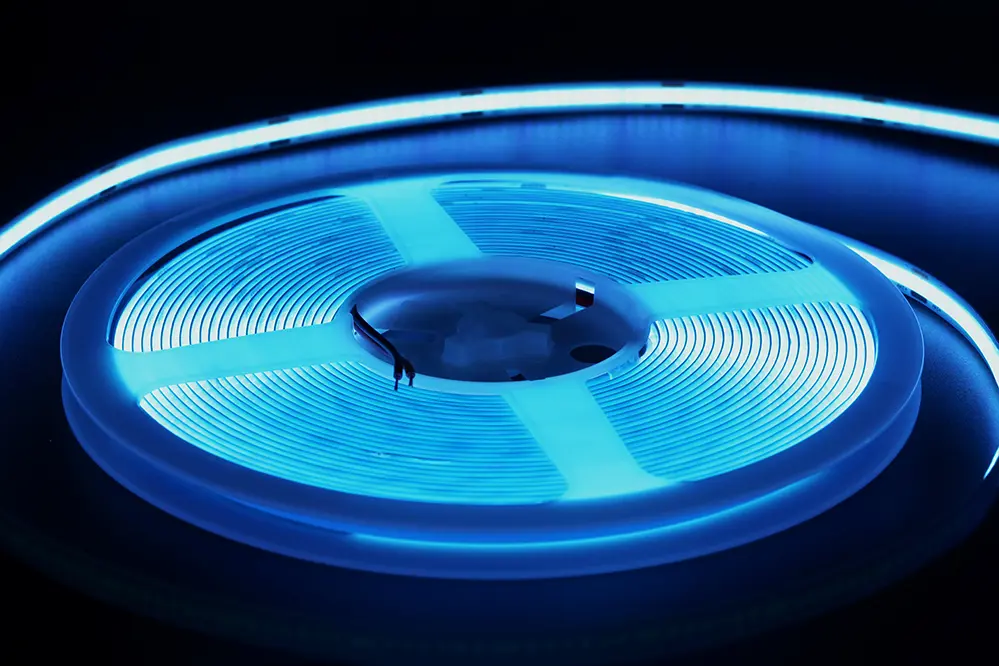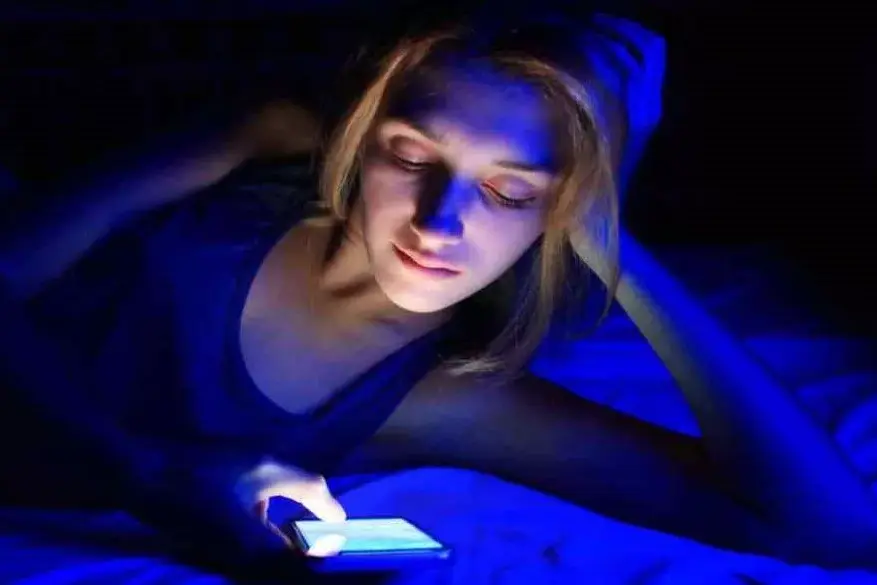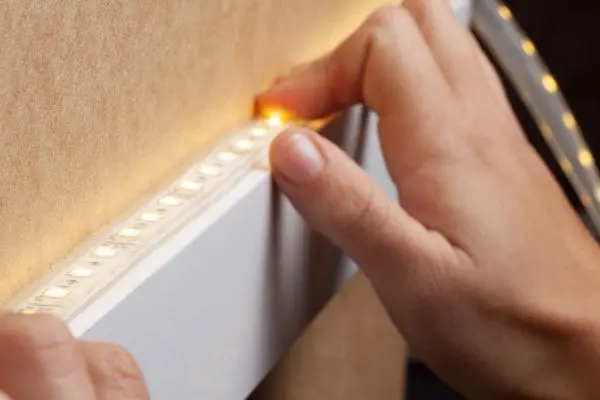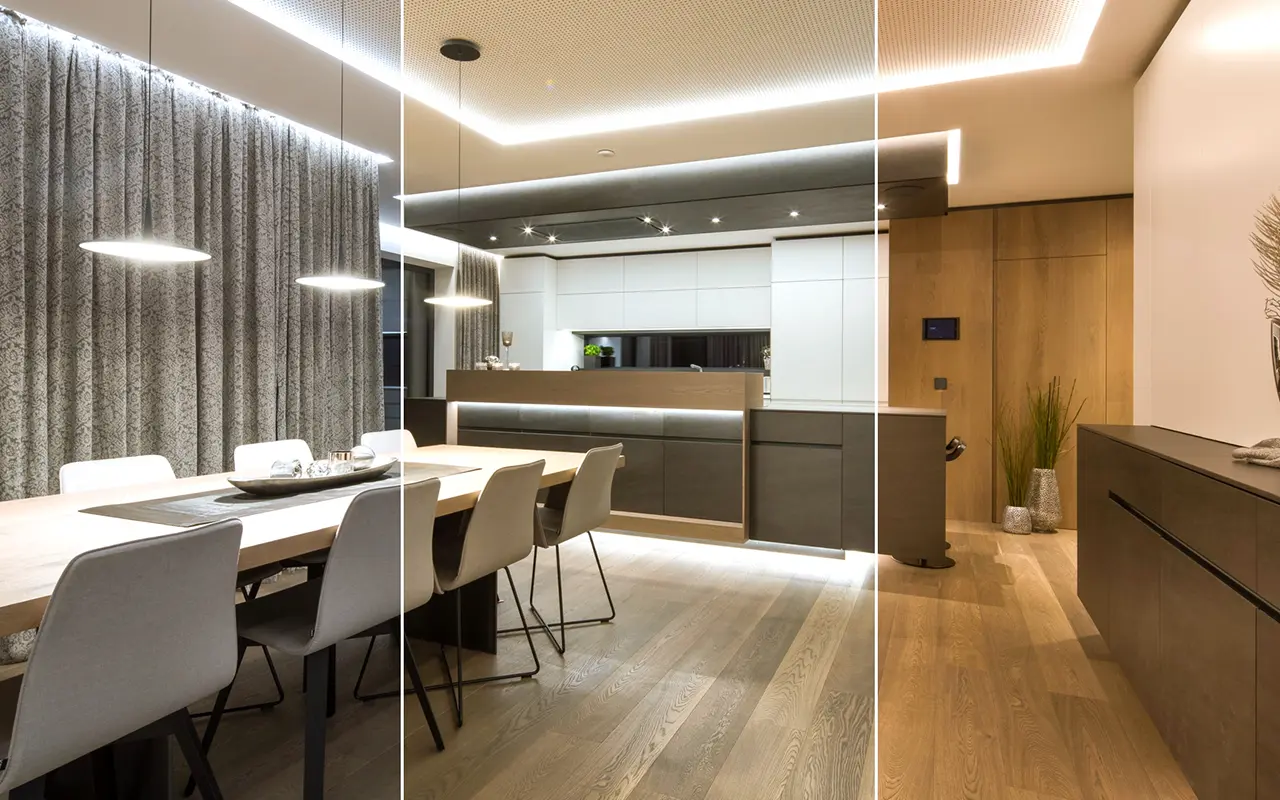Du er kommet til det rette sted for at opklare mysteriet om LED-strips og deres sundhedsmæssige konsekvenser. Med vores dybdegående forskning og ekspertviden guider vi dig trygt gennem fakta, afliver myter og giver enkle svar på dine presserende spørgsmål. Du kan være sikker på, at denne guide viser vejen til en forståelse af LED-belysningens sande indvirkning på helbredet.
LED-strips er i sagens natur ikke kræftfremkaldende. De producerer lys i et spektrum, der adskiller sig fra de UV-stråler, der er kendt for at øge kræftrisikoen.
Løbende forskning er afgørende for at forstå deres langsigtede sundhedseffekter fuldt ud. Tag med os på en rejse, hvor vi udforsker nuancerne i LED-belysning og dens sundhedsmæssige konsekvenser. Gennem detaljerede analyser og ekspertkommentarer giver vi dig omfattende indsigt, så du er godt rustet til at træffe informerede valg om LED-brug i dit daglige liv. Bliv hos os for at få en dybere forståelse af dette vigtige emne.
Introduktion: LED-strips og sundhedsproblemer
Inden for moderne belysning er LED-strips blevet et allestedsnærværende element i både bolig- og erhvervsmiljøer. Deres stigende popularitet kan tilskrives deres energieffektivitet, lange levetid og den livlige stemning, de skaber. Men efterhånden som brugen af dem er blevet mere udbredt, er der opstået spørgsmål om deres sikkerhed, især hvad angår risikoen for kræft.
LED-strips fungerer efter princippet om elektroluminescens, en proces, hvor der udsendes lys fra et materiale, når en elektrisk strøm passerer gennem det. Denne teknologi er fundamentalt forskellig fra traditionelle glødepærer, som producerer lys ved at opvarme en glødetråd, eller lysstofrør, som er afhængige af en kemisk reaktion, der involverer gas og kviksølvdamp. I modsætning til disse ældre teknologier bruger LED'er ikke kviksølv eller udsender betydelig varme, hvilket reducerer risikoen for forbrændinger og kviksølvforgiftning. Bekymringen ved LED-lys, især det blå lys, de ofte udsender, er imidlertid potentialet for celleskader og forstyrrelse af døgnrytmen, faktorer, der er blevet forbundet med kræft.
Det er vigtigt at bemærke, at mens UV-stråling fra solen er et velkendt kræftfremkaldende stof, er det lys, der udsendes fra LED-strips, i det synlige spektrum og indeholder ikke UV-stråler. Det blå lys fra LED'er har lavere energi end UV-lys og er ikke klassificeret som kræftfremkaldende af de store sundhedsorganisationer. Når det er sagt, kan overeksponering for intenst blåt lys, især om natten, forstyrre kroppens produktion af melatonin. Dette hormon regulerer søvncyklusser og er blevet sat i forbindelse med undertrykkelse af kræftsvulster.
Forskningen i LED-belysningens sundhedsmæssige konsekvenser er i gang. Nogle undersøgelser har antydet, at langvarig eksponering for intenst blåt lys kan have skadelige virkninger, mens andre understreger behovet for mere omfattende forskning. En undersøgelse offentliggjort i tidsskriftet "Environmental Health Perspectives" fremhævede for eksempel LED-lysets potentiale til at forstyrre døgnrytmen, hvilket i teorien kunne påvirke kræftrisikoen. Men disse undersøgelser fokuserer ofte på høje eksponeringsniveauer, som man ikke typisk oplever i hverdagen.
Lyseksponering og kræft: Forstå sammenhængen
Når man diskuterer de potentielle sundhedsrisici, der er forbundet med forskellige lyskilder, er det vigtigt at skelne mellem lystyperne og deres respektive virkninger. Bekymringen for en sammenhæng mellem lyseksponering og kræft har været et emne af videnskabelig interesse i nogen tid, især med den udbredte brug af forskellige kunstige lyskilder i vores daglige liv.
UV-stråling, hovedsageligt fra solen, er en velkendt risikofaktor for hudkræft. Denne type lys har nok energi til at forårsage skader på DNA'et i vores celler, hvilket kan føre til kræft. I modsætning hertil falder lyset fra LED-strips inden for det synlige spektrum, som er langt mindre energirigt end UV-stråler. Det er vigtigt at bemærke, at selv om alt lys i teorien kan forårsage en eller anden form for celleskader på grund af dets energi, er risikoen betydeligt lavere med synligt lys, som det fra LED'er, sammenlignet med UV-lys.
Et særligt problem med LED-lys er dog udsendelsen af blåt lys. Blåt lys har et højere energiniveau inden for det synlige spektrum, og i for store mængder er det blevet sat i forbindelse med anstrengte øjne og forstyrrede søvnmønstre. Forstyrrelser i søvn og døgnrytme er blevet forbundet med forskellige sundhedsproblemer, herunder en øget risiko for kræft. Det skyldes, at tilstrækkelig søvn og en regelmæssig døgnrytme spiller en afgørende rolle for kroppens evne til at reparere DNA-skader. Selv om det blå lys fra LED'er ikke er kræftfremkaldende som UV-lys, kan dets indvirkning på søvnmønstre potentielt bidrage til en øget kræftrisiko indirekte.
Det er vigtigt at sætte disse risici ind i en sammenhæng. Mængden og intensiteten af blåt lys, der udsendes af LED-strips, er generelt meget lavere end det, der betragtes som skadeligt. For de fleste mennesker betyder den daglige brug af LED-belysning, at de ikke udsættes for farlige niveauer af blåt lys. Desuden er mange LED'er nu designet til at udsende varmere lys, hvilket reducerer mængden af blåt lys.
Undersøgelse af kræftrisikoen ved LED-strips
Den voksende bekymring for de potentielle sundhedsrisici ved LED-strips, især med hensyn til kræft, nødvendiggør en nærmere videnskabelig undersøgelse. Det er vigtigt at forstå, hvordan lyset fra disse LED'er sammenlignes med kendte kræftfremkaldende lyskilder, primært med fokus på lysets spektrum og dets biologiske virkninger.
LED-strips mod kendte kræftfremkaldende stoffer
Det primære problem med LED-strips er udledning af blåt lys. Blåt lys, et højenergisk synligt lys, er allestedsnærværende i vores digitale verden og stammer fra skærme, moderne belysning og endda solen. Hvis man sammenligner det med UV-stråling, som er kendt for sine kræftfremkaldende egenskaber, får man et klarere perspektiv. UV-stråling, især UVA- og UVB-stråler, har et højere energiniveau end synligt lys. Den er med sikkerhed blevet forbundet med hudkræft og andre sundhedsproblemer på grund af dens evne til at skade DNA.
I modsætning hertil udsender LED-strips primært lys i det synlige spektrum, hvor blåt lys er en væsentlig komponent. Det er vigtigt at bemærke, at selv om blåt lys har højere energi end andre dele af det synlige spektrum, har det betydeligt lavere energi end UV-lys. Derfor er risikoen for DNA-skader, som er en forløber for kræft, meget mindre ved eksponering for LED-lys.
Flere studier har undersøgt virkningerne af blåt lys på kroppen. For eksempel er langvarig eksponering for intenst blåt lys blevet forbundet med overanstrengelse af øjnene og kan potentielt bidrage til aldersrelateret makuladegeneration. Disse undersøgelser forbinder dog ikke direkte eksponering for blåt lys fra LED'er med kræft. I stedet tyder de på, at overeksponering, især om natten, kan forstyrre døgnrytmen og melatoninproduktionen og dermed indirekte påvirke helbredet.
Det er vigtigt at afbalancere disse resultater med praktisk brug. Den gennemsnitlige eksponering for blåt lys fra LED-strips i hjemmet eller på kontoret anses generelt for at være lavrisiko med hensyn til kræftfremkaldende potentiale. Desuden har fremskridt inden for LED-teknologi ført til udvikling af LED'er med justerbare farvetemperaturer, hvilket giver brugerne mulighed for at reducere eksponeringen for blåt lys, især om aftenen.
Dybdegående analyse af LED-lys og sundhedsundersøgelser
Udviklingen inden for kunstig belysning, primært LED-teknologi, har ført til omfattende forskning i dens potentielle sundhedspåvirkninger. Det omfatter undersøgelser af, om LED-belysning, især lysbånd, kan være forbundet med kræft og andre sundhedsproblemer.
Undersøgelser af LED-belysning fokuserer ofte på typen og intensiteten af det udsendte lys og dets interaktion med menneskers sundhed. Et almindeligt forskningsområde er f.eks. indvirkningen af langvarig eksponering for blåt lys, som er en væsentlig komponent i mange LED-lys. Selv om blåt lys ikke er skadeligt i sig selv, kan langvarig eksponering, især om natten, forstyrre de naturlige søvnmønstre og døgnrytmer og føre til potentielle sundhedsmæssige konsekvenser.
Det er dog vigtigt at skelne mellem forskellige typer af lyseksponering. For eksempel adskiller det blå lys fra LED-skærme og -lamper sig markant fra den skadelige UV-stråling, der er kendt for at forårsage hudkræft. Mens UV-lys har energi nok til at skade DNA direkte, er energiniveauet i blåt lys fra LED'er meget lavere. De er ikke klassificeret som kræftfremkaldende af de store sundhedsorganisationer.
Nylige undersøgelser har også udforsket muligheden for ikke-visuelle effekter af LED-belysning. For eksempel har forskning offentliggjort i 'Journal of Environmental Management' diskuteret virkningen af kunstig belysning på menneskets fysiologi ud over synet og overvejet faktorer som f.eks. hormonforstyrrelser. Disse undersøgelser bidrager til en mere nuanceret forståelse af, hvordan forskellige lysspektre, herunder dem, der udsendes af LED'er, interagerer med vores kroppe.
Desuden har fremskridt inden for LED-teknologi ført til udvikling af LED'er med variable farvetemperaturer og reduceret udledning af blåt lys, hvilket imødekommer nogle af de bekymringer, som tidligere undersøgelser har givet anledning til. Denne tilpasningsevne gør det muligt at afbøde potentielle negative virkninger på søvn og døgnrytme, især ved brug af varmere lysindstillinger om aftenen.
Fremtiden for LED-teknologi og sundhedsmæssige konsekvenser
Landskabet for LED-teknologi udvikler sig hurtigt og bringer innovationer frem, der ikke kun sigter mod højere effektivitet og bedre ydeevne, men også prioriterer sundhed og sikkerhed. Den voksende bevidsthed om de potentielle sundhedsmæssige konsekvenser af kunstig belysning driver denne fremadrettede udvikling af LED-teknologien.
En af de vigtigste udviklinger inden for LED-teknologi er fokus på at reducere udledningen af blåt lys. I erkendelse af bekymringerne over blåt lys og dets indvirkning på søvn og døgnrytme designer producenterne nu LED'er med varmere farvetemperaturer, især til brug i aftentimerne. Disse fremskridt hjælper med at afbøde den potentielle forstyrrelse af søvnmønstre forårsaget af overeksponering for blåt lys.
En anden væsentlig forbedring er forbedringen af farvegengivelsesindekset (CRI) i LED-lys. En højere CRI betyder, at lyset fra LED'er i højere grad efterligner naturligt sollys, hvilket giver et mere behageligt og visuelt tiltalende miljø. Det forbedrer ikke kun lysets æstetiske kvalitet, men reducerer også belastningen af øjnene, hvilket bidrager til en sundere belysningsoplevelse.
Der arbejdes også på at integrere smart teknologi i LED-belysningssystemer. Smarte LED'er kan programmeres til at ændre farvetemperatur i løbet af dagen og efterligne sollysets naturlige udvikling. Det kan understøtte menneskekroppens naturlige døgnrytme og forbedre søvnkvaliteten og det generelle velbefindende.
I takt med at forskningen fortsætter med at belyse de sundhedsmæssige konsekvenser af forskellige typer kunstig belysning, tilpasser LED-teknologien sig desuden for at imødekomme disse udfordringer. Fremtidige LED-produkter vil sandsynligvis indeholde mere sundhedsbevidste funktioner, som f.eks. justerbar lysstyrke og farveindstillinger, der kan tilpasses individuelle præferencer og behov.
Afslutning: Forårsager LED-lys kræft?
Nu hvor vi er nået til kulminationen på vores udforskning af de potentielle sundhedsrisici ved LED-strips, især deres forbindelse til kræft, er det vigtigt at konsolidere vores forståelse. Denne omfattende oversigt bygger på en række videnskabelige undersøgelser, ekspertindsigter og praktiske overvejelser, der er diskuteret i hele denne guide.
Gennemgang af de vigtigste videnskabelige resultater: Hovedparten af den hidtidige videnskabelige forskning tyder på, at LED-strips i sig selv ikke udgør en direkte kræftrisiko. I modsætning til UV-stråling, der er kendt for sine kræftfremkaldende egenskaber, ligger lyset fra LED'er i det synlige spektrum og har ikke de samme DNA-skadelige virkninger. Undersøgelser med fokus på eksponering for blåt lys har givet anledning til bekymring for søvnforstyrrelser og ændringer i døgnrytmen, men det er ikke ensbetydende med en direkte kræftrisiko.
Adressering af almindelige misforståelser: I løbet af vores diskussion har vi taget fat på forskellige myter om LED-belysning. Det er vigtigt at gentage, at selv om LED'er udsender blåt lys, er niveauerne ikke i sig selv skadelige under normale brugsforhold. Fremskridtene inden for LED-teknologi, herunder udviklingen af lys med justerbare farvetemperaturer, mindsker de potentielle risici yderligere.
Refleksion over den nuværende forståelse af LED-teknologi: LED-teknologien er i konstant udvikling, og den igangværende forskning kaster løbende lys over dens sundhedsmæssige konsekvenser. På nuværende tidspunkt er der enighed i det videnskabelige samfund om, at LED-lys er sikre i forhold til kræftrisici, forudsat at de bruges ansvarligt.
Vejledning til sikker og gavnlig brug: Når du inkorporerer LED-strips i dit liv, er det en fordel at følge bedste praksis. Vælg LED'er med lavere udledning af blåt lys til aftenbrug, sørg for korrekt installation for at undgå fysiske farer, og overvej den overordnede kvalitet og certificering af de produkter, du vælger.
Afbalancering af fordele og risici: LED-lys har mange fordele, herunder energieffektivitet, lang levetid og alsidighed. At opveje disse fordele med eventuelle sundhedsrisici indebærer at holde sig informeret og træffe valg, der er i overensstemmelse med dit velbefindende. For eksempel kan brug af LED'er med en varmere farvetemperatur i boligområder forbedre både komfort og sikkerhed.
Ofte stillede spørgsmål
Spørgsmål: Er LED-strips mere sikre end traditionelle pærer med hensyn til kræftrisiko?
Svar: LED-strips anses generelt for at være mere sikre end traditionelle pærer, som glødepærer eller lysstofrør, hvad angår kræftrisiko. De udsender ikke UV-stråling, som er forbundet med visse former for kræft. Det er dog vigtigt at bruge dem ansvarligt, især med hensyn til eksponering for blåt lys.
Q: Kan det blå lys fra LED-strips påvirke søvnmønsteret?
Svar: Ja, blåt lys fra LED-strips kan påvirke døgnrytmen og potentielt påvirke søvnmønsteret. Det anbefales at minimere eksponeringen for blåt lys, især i aftentimerne, for at opretholde sunde søvncyklusser.
Q: Er der bestemte typer LED-strips, der anbefales af hensyn til sundhedssikkerheden?
Svar: Når du prioriterer sundhedssikkerhed, skal du vælge LED-strips med en lavere emission af blåt lys og dem, der er certificeret af anerkendte organisationer for sikkerhedsstandarder. Se også efter LED'er med et højt farvegengivelsesindeks (CRI) for at få en mere naturlig lysoplevelse.
Q: Hvor ofte skal LED-strips udskiftes af sikkerhedsmæssige årsager?
Svar: Levetiden for LED-strips varierer afhængigt af kvalitet og brug. Men det er god praksis at udskifte dem med et par års mellemrum, eller når du bemærker betydelige dæmpninger eller farveændringer, for at sikre, at de fungerer sikkert og effektivt.
Q: Er det sikkert for børn og kæledyr at opholde sig i nærheden af LED-strips?
A: Generelt er LED-strips sikre for både børn og kæledyr, da de kun udsender lidt varme og ingen skadelig UV-stråling. Det er dog vigtigt at sikre, at de er installeret korrekt og uden for rækkevidde for at undgå utilsigtet manipulation eller skade.
Q: Kan LED-strips forårsage hudkræft ligesom UV-stråler?
Svar: Der er ikke noget, der tyder på, at LED-strips forårsager hudkræft, som UV-stråler gør. LED-lys udsender for lave niveauer af UV-stråling, som er en nøglefaktor i udviklingen af hudkræft.
Q: Er der miljøproblemer forbundet med at bruge LED-strips?
Svar: LED-strips er mere energieffektive og har en længere levetid end mange traditionelle lyskilder, hvilket er godt for miljøet. Ansvarlig bortskaffelse er dog afgørende, da de indeholder komponenter, der kan være skadelige, hvis de ikke håndteres korrekt.
Q: Kan kvaliteten af LED-strips variere, og hvordan påvirker det helbredet?
Svar: Ja, kvaliteten af LED-strips kan variere betydeligt. LED'er af lavere kvalitet kan udsende et skarpere lysspektrum og ikke opfylde sikkerhedsstandarderne, hvilket potentielt kan påvirke øjnenes sundhed og komfort. Det anbefales at investere i LED'er af høj kvalitet fra anerkendte producenter.
Q: Hvordan kan jeg reducere de potentielle sundhedsrisici, der er forbundet med LED-strips?
Svar: Med hensyn til potentielle sundhedsrisici skal du bruge LED-strips med måde, især når det gælder eksponering for blåt lys. Sørg for korrekt installation, brug kvalitetsprodukter, og overvej at bruge lys med justerbar farvetemperatur til aftenbrug.
Q: Er der specifikke regler eller standarder for LED-strips for at sikre sikkerheden?
Svar: Ja, der findes industristandarder og regler, som regulerer sikkerheden og kvaliteten af LED-strips. Se efter produkter, der opfylder disse standarder og er certificeret af autoritative organer for at sikre, at de er sikre at bruge.
Konklusion
Afslutningsvis afspejler rejsen gennem forståelsen af de sikkerheds- og sundhedsmæssige konsekvenser af LED-strips vores engagement i informerede valg og ansvarlig brug.
I denne bestræbelse, Unitop, en af Kinas førende producenter af LED lysbånd og LED neon flexstår som et fyrtårn for kvalitet og innovation i LED-industrien. Med fokus på at producere førsteklasses, sikre og effektive belysningsløsninger eksemplificerer Unitop blandingen af teknologiske fremskridt og sundhedsbevidst produktion. For dem, der søger yderligere klarhed, har specifikke spørgsmål eller har unikke krav, glæder Unitop sig over dine forespørgsler. Tag kontakt til os straks for at udforske, hvordan vores ekspertise og produkter kan oplyse dine rum på en sikker og strålende måde.
Relaterede indlæg

Tom er nu salgschef for Unitop (Kina) Co, Limited. Han har været i LED-belysning industrien lige siden 2005. Han er ekspert i salg og marketing samt fabriksledelse. Han kan lide bodybuilding, og han er også en vild Apple-fan! Han er en hårdtarbejdende fyr og elsker at lære og prøve nye ting.
E-mail: tom@unitopledstrip.com WhatsApp: +86-18680307140







Skriv en kommentar
Vil du deltage i diskussionen?Du er velkommen til at bidrage!